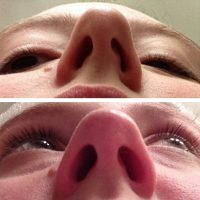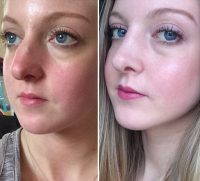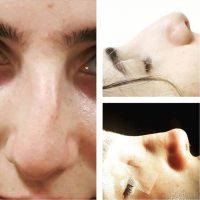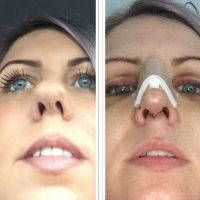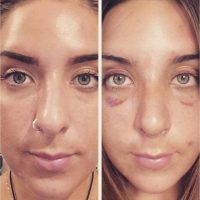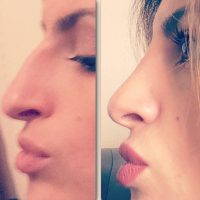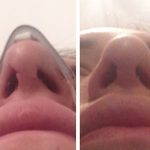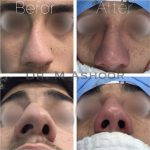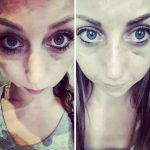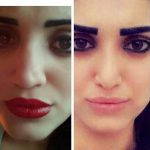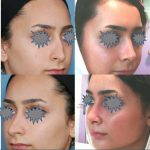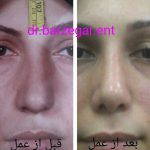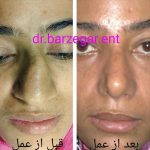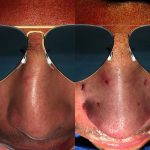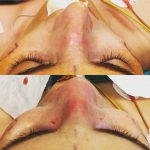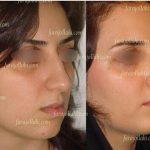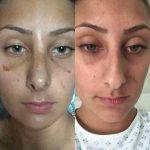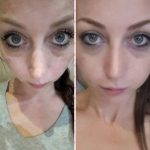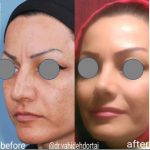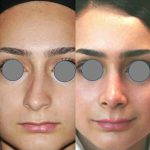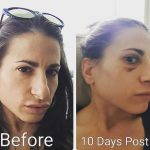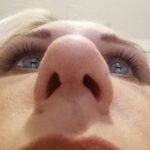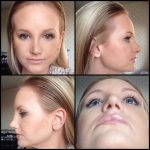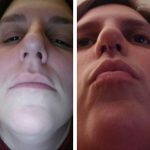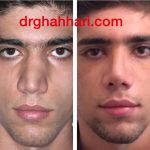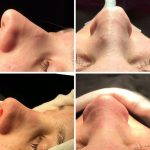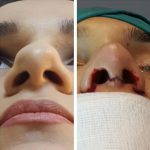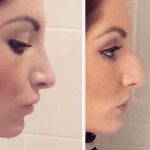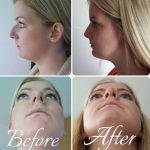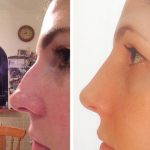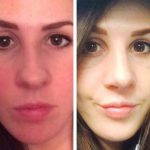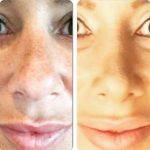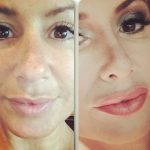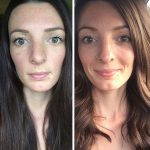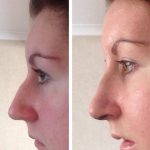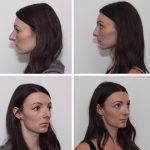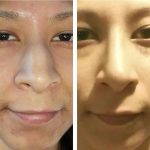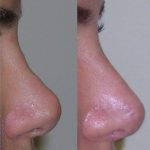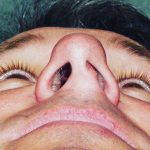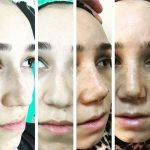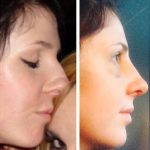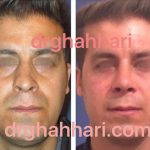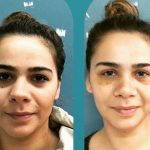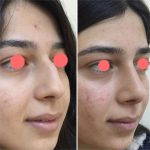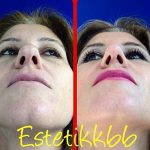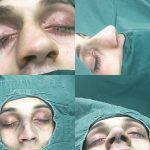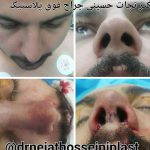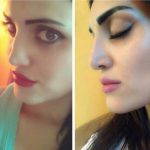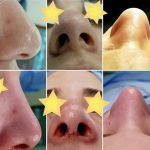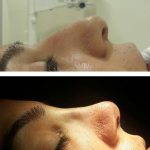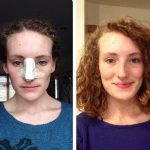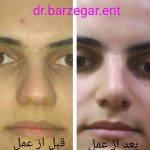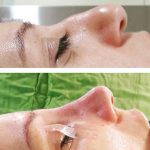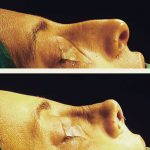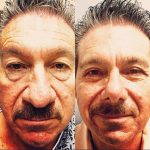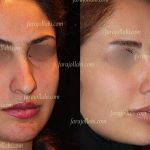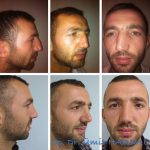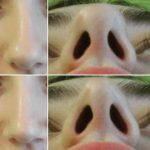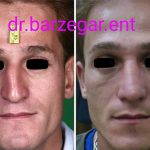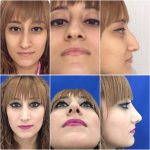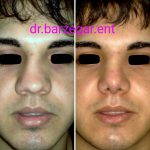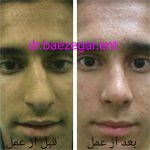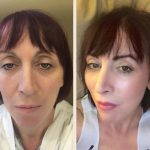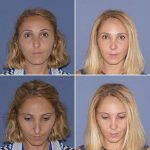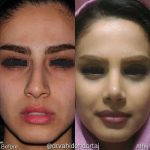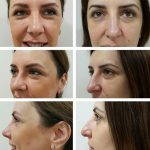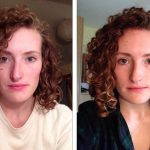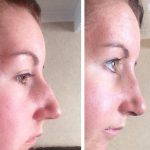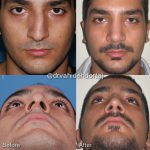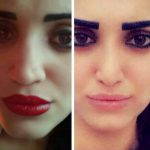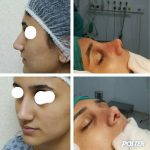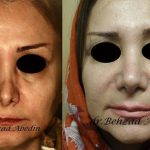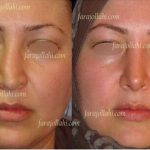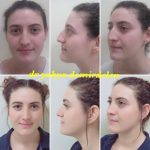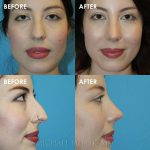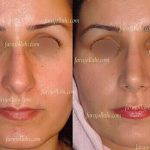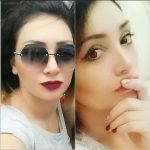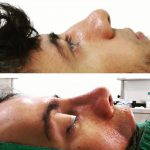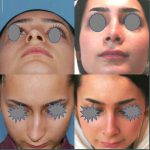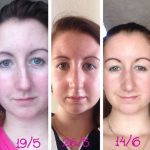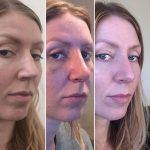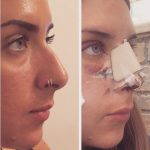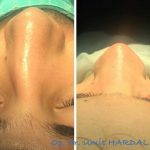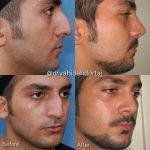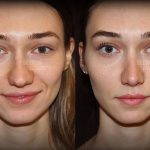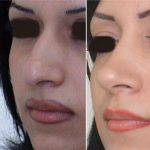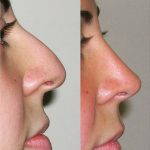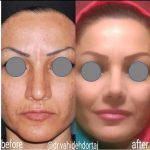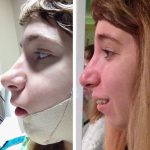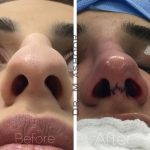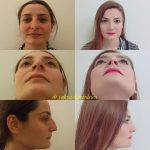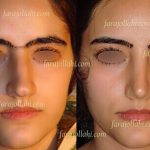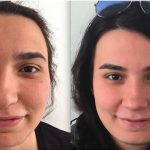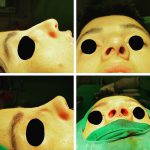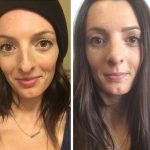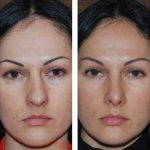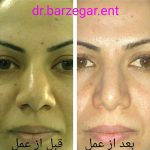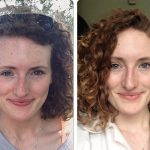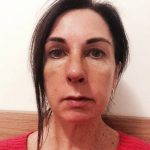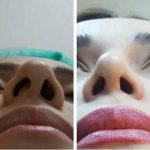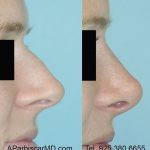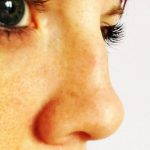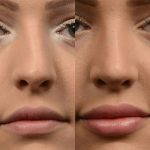Deviated Septum Before And After
Deviated septum – is one of the most common diseases of the nasal cavity. According to statistics, deviated nasal septum is relatively rare in young children, most often this disease affects nearly half of all adults, and more often deviated septum occurs in men than in women.
A baby has a flat and straight septum of the nose. Almost all of it is made up of cartilage tissue, which has islands of ossification. Over time, the nasal septum is transformed into bone, and the bones grow together. With the growth of the person and the violation of certain processes in the body, nasal septum begins to curve.
The nasal septum has an important function in our nose, providing a uniform distribution of air flow between the right and left lobes of the nose. With the help of the nasal septum is achieved harmonious fulfillment of the following conditions: warm, cleansing, moisturizing. At deviated nasal septum, these functions are being violated.
Causes of deviated nasal septum
– uneven growth of the skull bones, which leads to the fact that the size of the nasal cavity is also changed, the nasal septum getting crowded in the nasal cavity, and it has to be bent;
– traumatic causes (most of them are typical for boys and men) as a result of a strong kick, is shifted the nasal bone, nasal septum deformity and abnormal fusion of bones,
– which leads to a curvature of the nasal septum;
– the presence of polyps and tumors of the nasal mucosa, which leads to respiratory failure of one of the nostrils, and then to the curvature of the nasal septum;
– hypertrophy (uneven development of a nasal shells), putting pressure on the nasal septum.
The curvature of the nasal septum. Symptoms.
The curvature of the nasal septum may have the following symptoms:
- Asymmetrical shape of the nose (especially when a curvature of the nasal septum as a result of injury);
- constant chronic runny nose (violated nasal breathing, mucous discharge from the nose);
- reflex headaches arising from the constant touch of the nasal mucosa to a deviated septum;
- loud snoring at night;
- nosebleeds that occur due to the thinning of the mucosa near deviated nasal septum;
- decreased performance, increased fatigue of the body due to the reduced supply of oxygen in the blood;
- discomfort during nasal breathing;
- frequent acute respiratory infections with cough, sneezing, runny nose, fever;
- scratchy and sore throat, cough;
- hearing loss as a result of inflammation in the ear;
- decrease in olfactory abilities;
- absent-mindedness, memory impairment.
Types of curvature of the nasal septum
The vast majority of adults have small curvature of the nasal septum. But they do not interfere to proper airflow through the nostrils and correct breathing.
There are known the following types of deviated nasal septum:
- a deviated septum of the nose;
- ridge;
- thorn;
- a combination of different types of curvature.
Most commonly, people have a curvature of the nasal septum in the front. Less common they have deformation of the back of the nasal septum.
The nose is very necessary organ that performs several important tasks. Our nose warms and humidifies inhaled air, holds dust particles brought by air, neutralizes the bacteria that enter from outside. In addition, thanks to the olfactory region of the nose we perceive and differentiate the various smells.
Diagnosis of nasal septum
To find out if you need an operation on the nasal septum, must pass a comprehensive diagnosis. Diagnosis includes an external inspection of ENT, rhinoscopy, the use of additional laboratory tests and analyzes.
Visual inspection of the doctor-otolaryngologist allows to determine appearance of the nose. In addition, the physician evaluates nasal breathing. He brings wool separately to each nostril, explores the oscillation villi during inhalation and exhalation.
Evaluation of the human sense of smell is also produced for each nostril separately. The patient should blindly identify the smell on cotton wool. If there is a deviation of the nasal septum, the sense of smell is usually reduced. Thanks to rhinoscopy the examination of the nasal cavity is achieved by means of special tools. In its examination the doctor can use the front and rear rhinoscopy.
Anterior rhinoscopy is used in order to better examine the nasal cavity, and neoplasms, available out there. This is done using the nasal dilator and a special probe. By front rhinoscopy can be seen nasal polyps, hematomas, abscesses and tumors in the nasal cavity.
The rear rhinoscopy is inspection of the nasopharynx and nasal cavity from the mouth. It is carried out with a spatula and a special mirror.
You can also view our gallery of photos (deviated septum before and after). In the images you can see what deviated septum disadvantages were in patients who have undergone rhinoplasty.
Why do you need nasal septum surgery
Indications for surgery to correct the nasal septum may include the following:
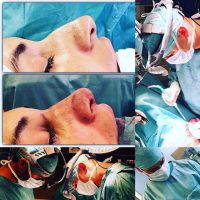
Deviated Septum Surgery Is Typically An Outpatient Procedure And Can Be Done Under Either Local Or General Anesthesia
- external cosmetic defect;
- labored breathing by nose;
- rhinitis in the chronic form;
- inflammation of the middle ear (otitis media), resulting from the curvature of the nasal septum;
- persistent headache;
- sinusitis, ethmoiditis appearing due to the curved nasal septum.
Nasal septum deviation treatment
Do I need surgery for deviated nasal septum? If you are greatly concerned about the consequences, it is better to decide on the operation.
In our clinic is possible to conduct low-impact correction of the nasal septum with the use of various modern techniques.
Surgical treatment, such as laser surgery for curvature of the nasal septum, is aimed at the normalization of nasal breathing, restoring the anatomy of the nasal cavity. In our clinic performed septoplasty operation that consists in partial removal of the deformed cartilage, and if necessary, the bony part of septum.
Correction of the nasal septum with the help of surgery allows you to make alignment and thinning of curved cartilage, i.e. modification. Modified cartilage becomes flexible and pliable, allowing the surgeon to set it back in place and to achieve straightening of the nasal septum.
When the local deviation of the nasal septum (bump) is possible to conduct minimally invasive endoscopic septoplasty. Laser operation to straighten the nasal septum is also considered one of the sparing techniques.
In cases when patient has a deviated septum and he or she complains of external deformation of the nose, rhinoplasty is possible.
Deviated Septum pictures of before and after
- Septoplasty Is A Surgical Procedure To Fix A Deviated Nasal Septum
- A Crooked Septum Can Make Breathing Difficult
- After Deviated Septum Surgery What To Expect
- After Deviated Septum Surgery
- Before And After Deviated Septum (1)
- Before And After Deviated Septum (2)
- Before And After Septoplasty (1)
- Before And After Septoplasty (3)
- Crooked Nose Deviated Septum
- Deviated Nasal Septum Before And After (2)
- Deviated Nasal Septum Before And After (3)
- Deviated Nasal Septum Before And After
- Deviated Nasal Septum Photos
- Deviated Nasal Septum Surgery Photos
- Deviated Septum 10 Days Post Op
- Deviated Septum After Primary Rhinoplasty
- Deviated Septum And A Nose Job
- Deviated Septum Bad Breath
- Deviated Septum Before And After (1)
- Deviated Septum Before And After (2)
- Deviated Septum Before And After (3)
- Deviated Septum Before And After (4)
- Deviated Septum Before And After (5)
- Deviated Septum Before And After (9)
- Deviated Septum Before And After (10)
- Deviated Septum Before And After (11)
- Deviated Septum Before And After (12)
- Deviated Septum Before And After (13)
- Deviated Septum Before And After (14)
- Deviated Septum Before And After (15)
- Deviated Septum Breathing Through One Nostril
- Deviated Septum Breathing
- Deviated Septum Can Cause Difficulty Breathing
- Deviated Septum Crooked Nose (2)
- Deviated Septum Crooked Nose
- Deviated Septum Fix
- Deviated Septum Galleries (1)
- Deviated Septum Galleries (2)
- Deviated Septum Galleries (3)
- Deviated Septum Galleries (4)
- Deviated Septum Loss Of Smell
- Deviated Septum Nose (3)
- Deviated Septum Nose (4)
- Deviated Septum Nose Job (2)
- Deviated Septum Nose Job (3)
- Deviated Septum Nose Job (4)
- Deviated Septum Nose Job (5)
- Deviated Septum Nose Job (6)
- Deviated Septum Operation (1)
- Deviated Septum Operation (2)
- Deviated Septum Operation (3)
- Deviated Septum Operation (4)
- Deviated Septum Photos (1)
- Deviated Septum Pics (1)
- Deviated Septum Pics (2)
- Deviated Septum Picture (2)
- Deviated Septum Pictures Of Before And After (1)
- Deviated Septum Pictures Of Before And After (3)
- Deviated Septum Post Surgery (2)
- Deviated Septum Post Surgery (3)
- Deviated Septum Preop And Postop Photos (1)
- Deviated Septum Preop And Postop Photos (2)
- Deviated Septum Procedure
- Deviated Septum Surgery Before And After
- Deviated Septum Surgery Recovery
- Deviated Septum Treatment
- Nasal Septoplasty Photo Before And After
- Nasal Septum Deviation Photos
- Nasal Septum Deviation Surgery
- Nasal Surgery For Deviated Septum (2)
- Nasal Surgery For Deviated Septum (3)
- Nose Surgery Deviated Septum
- Rhinoplasty Surgery Is The Only Way To Fix A Deviated Septum
- Septal Deviation
- Septoplasty Also May Be Done To Allow Access Into The Nose To Remove Nasal Polyps
- Septoplasty And Septorhinoplasty Are Common And Safe Procedures
- Septoplasty Is A Surgical Procedure To Correct A Deviated Septum
- Septoplasty Is Usually Performed As An Outpatient Procedure Unless Major Complications Arise
- Septoplasty May Also Be Combined With Sinus Surgery
- Septoplasty Only Before And After
- Septoplasty Photo Before And After (1)
- Septoplasty Photo Before And After (2)
- Septoplasty Photo Before And After (3)
- Septoplasty Photo Before And After
- Septoplasty Procedure
- Septoplasty Straightens The Septum, Allowing For Better Airflow Through Your Nose
- Septoplasty Surgery
- Septum Deviation Surgery
- Septum Surgery
- Some People Are Born With A Deviated Septum
- Sometimes, A Rhinoplasty Is Combined With Septoplasty To Improve The Appearance Of The Nose
- Surgery For Deviated Septum
- Surgery Of Deviated Nasal Septum Photos
- Surgery To Repair A Deviated Septum Is Usually Performed In An Outpatient Setting Under Local Or General Anesthesia
- Surgery To Straighten The Septum Is Called Septoplasty, Submucous Resection Of The Septum, Or Septal Reconstruction
- Symptoms Of A Deviated Septum May Include Frequent Nosebleeds And Facial Pain
- Symptoms Of A Deviated Septum
- The Most Common Symptom Of A Deviated Septum Is Nasal Congestion
- To Repair The Septum, The Surgeon Works Through The Nostrils
- What To Expect After A Septoplasty
